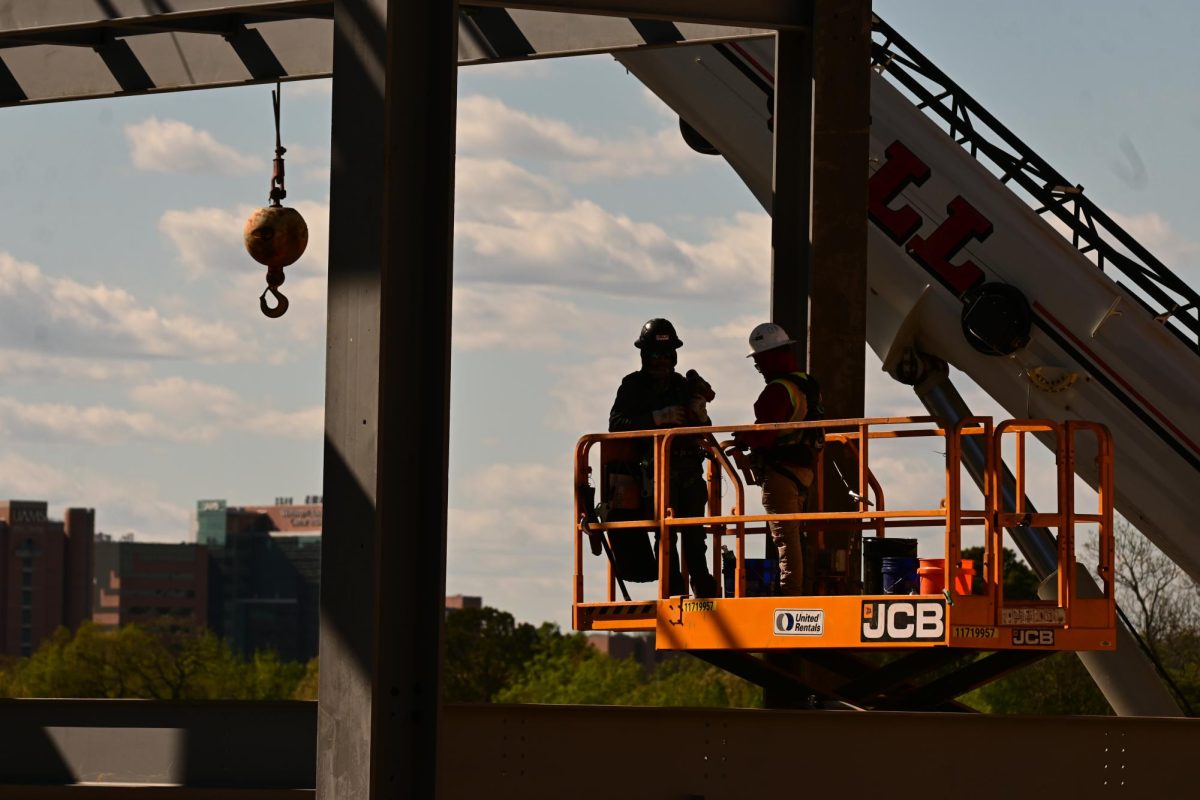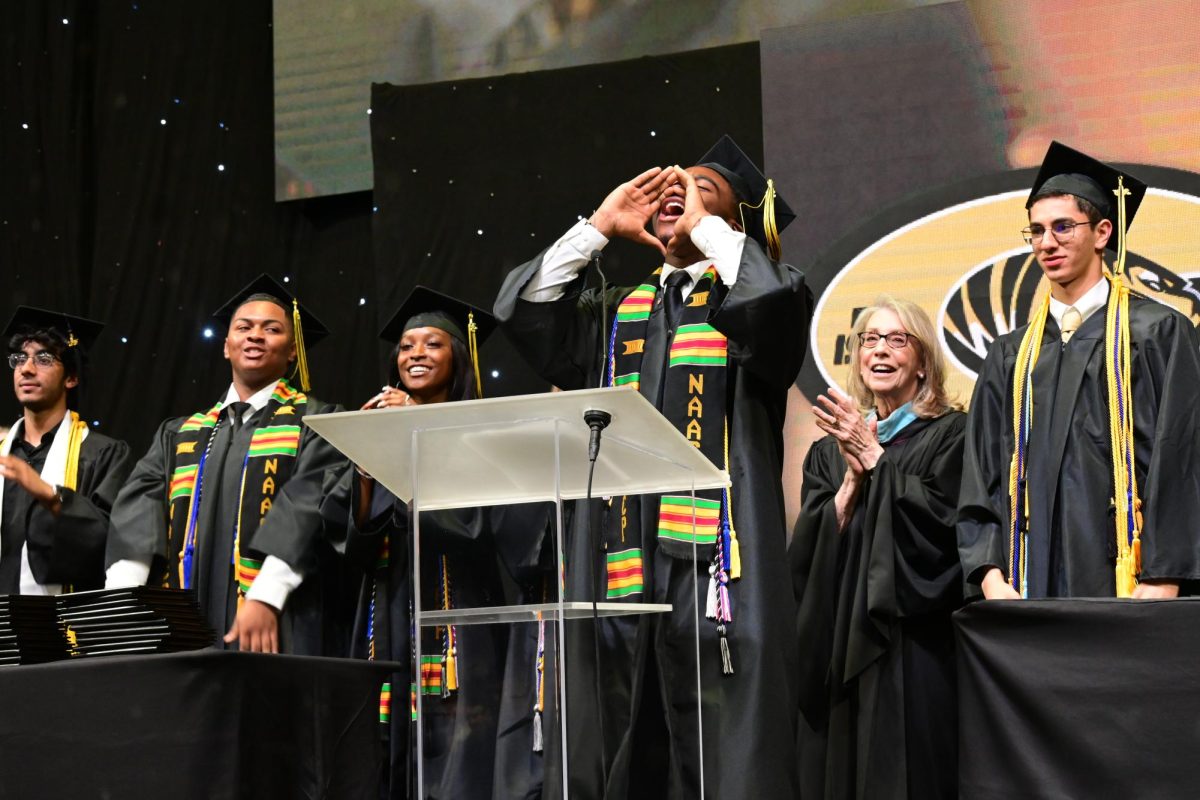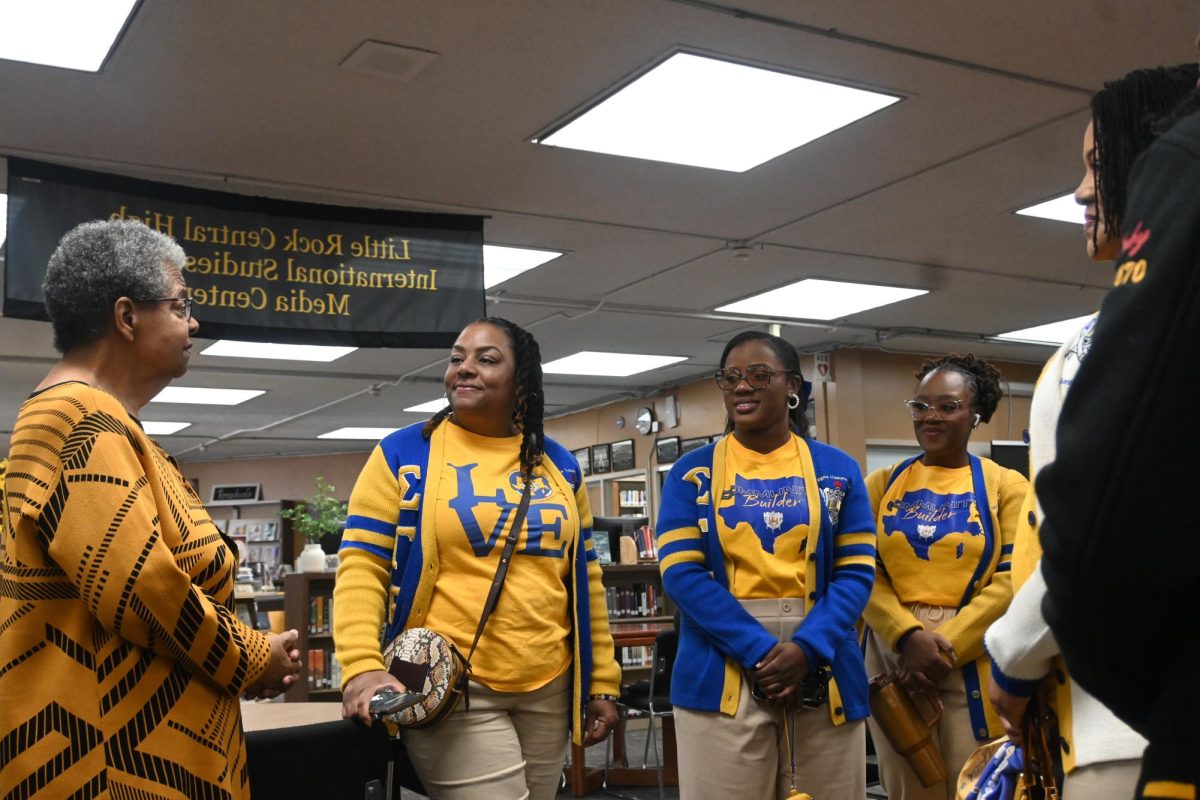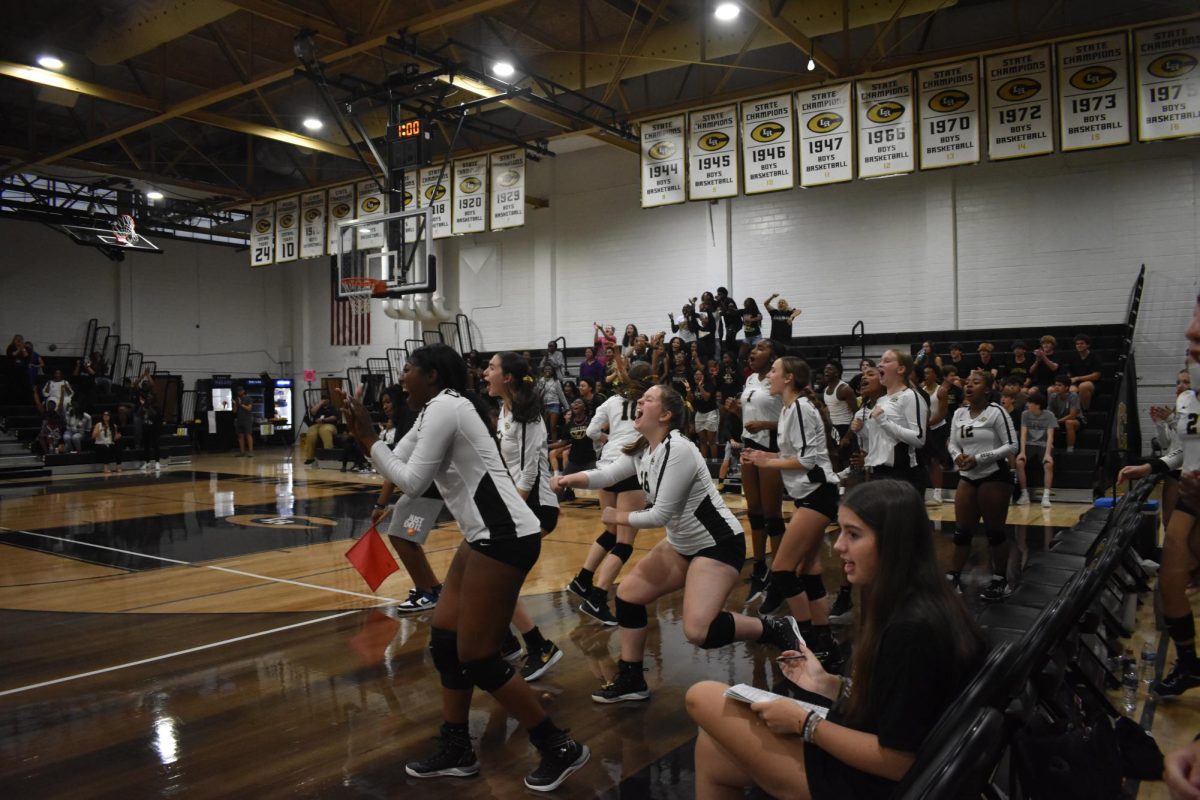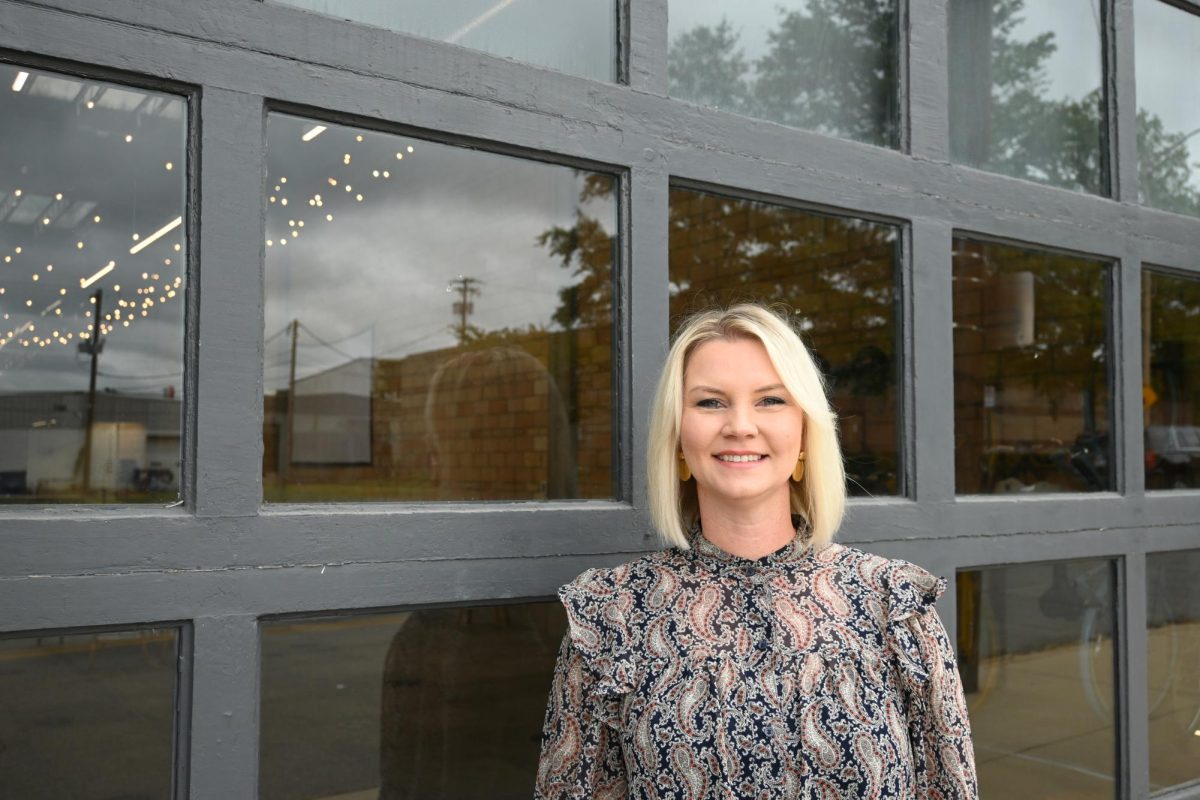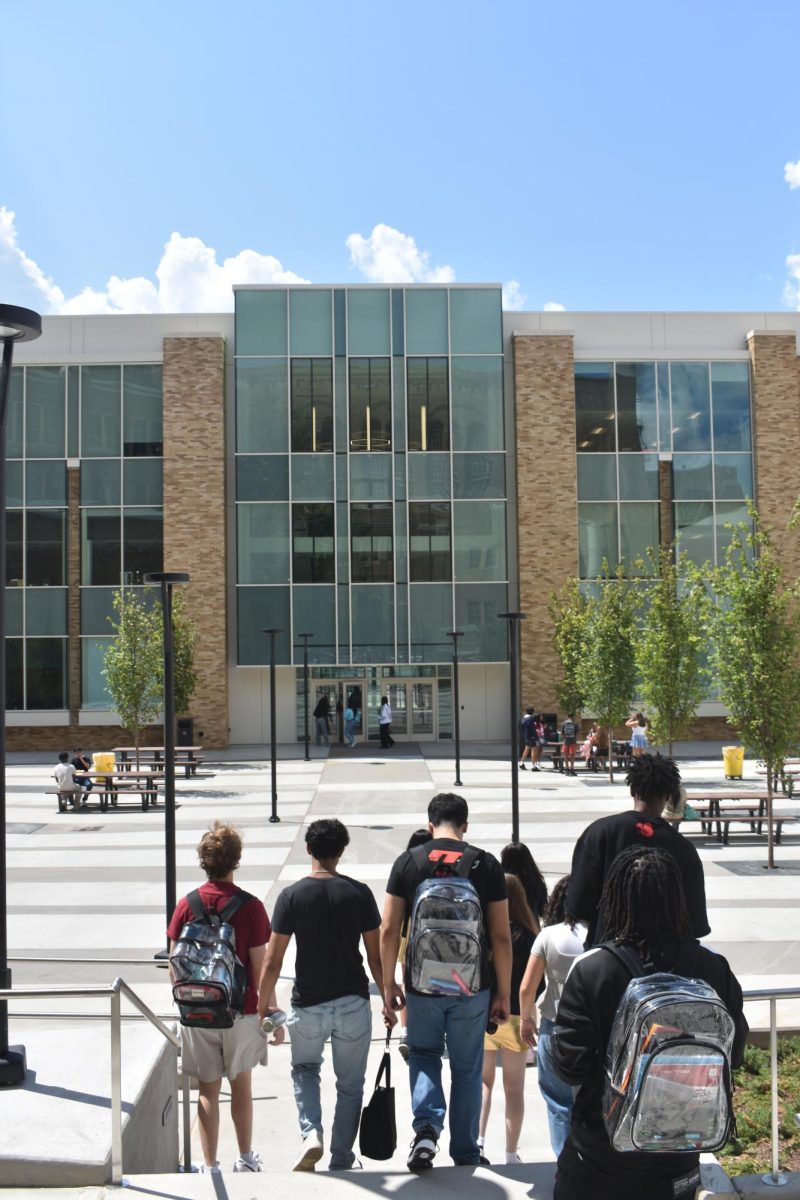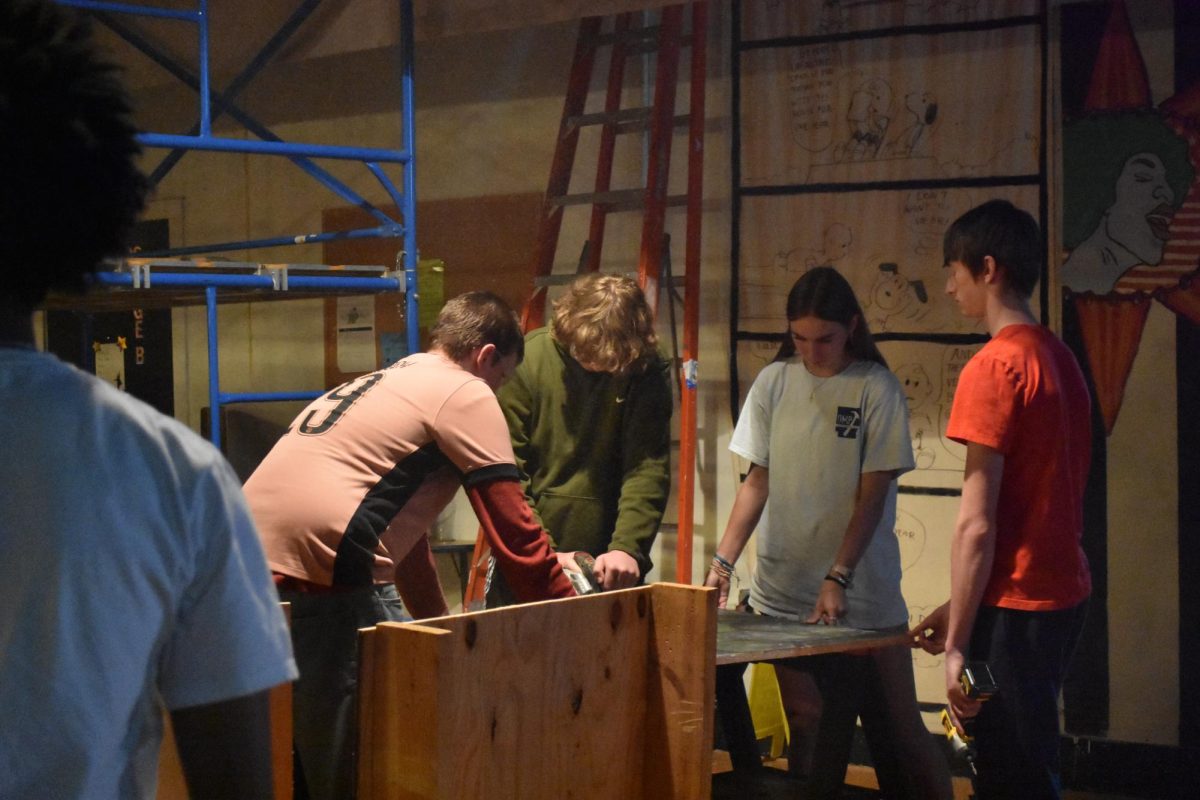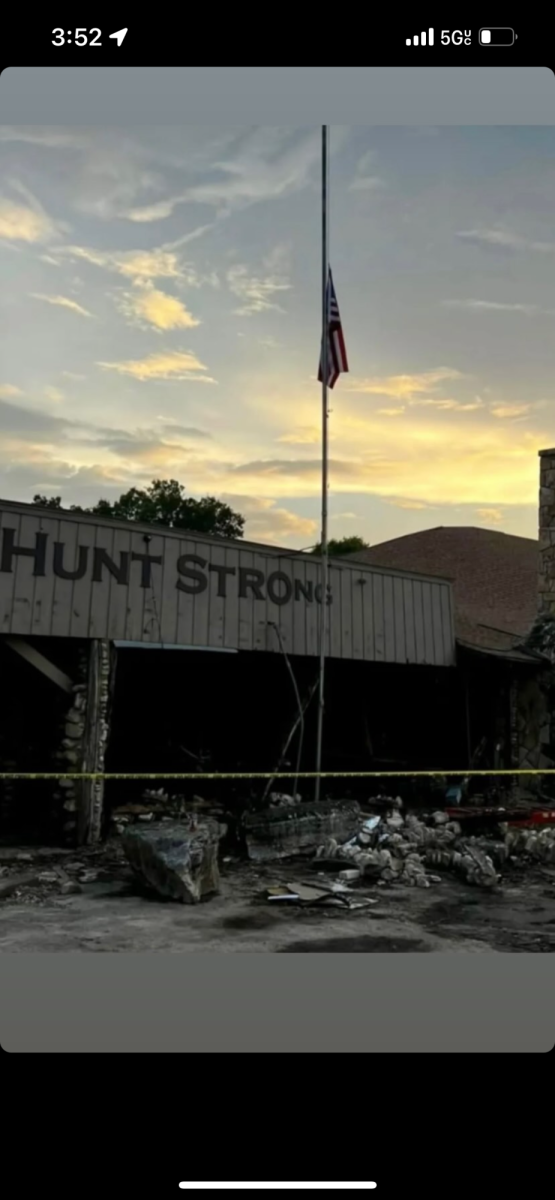Requiring over a thousand tons of steel, 336,000 bricks, and 77 miles of electrical wire, the plan to add 115,000 square feet of student space to campus is no small undertaking. Jeff Rochelle, senior project manager at Nabholz Construction, was aware of potential challenges from the beginning.
“With the campus being over a hundred years old, there’s a lot of things underground that you can’t see. You know you’re gonna run into something every time you put a backhoe bucket in the ground,” Rochelle said. “It may be something as simple as an old abandoned telephone line or a sewer main for Little Rock that’s not on the plans.”
When the $60 million project broke ground in August, the construction team ran into an undocumented sewer line.
“Nobody knew what was feeding into those pipes or where they went,” He said. “Construction stopped. You have to ask, ‘What is this? Is it active? For any power lines, is it hot?’”
These problems had to be factored into the project’s budget and schedule. Over two million dollars in “allowances” were set aside to cover the cost of these potential setbacks.
During the planning process, the school district conducted an extensive series of interviews with major construction management firms. After the joint venture between Nabholz and Doyne Construction was chosen, the two companies negotiated a GMP or guaranteed maximum price with LRSD, which totaled $60,627,694. Rochelle said the district will receive 100% of any savings upon the project’s completion.
The school district stays involved throughout the construction process, being updated weekly in Owner, Architect, Contractor (OAC) meetings. As of March 26, Rochelle says that the project is still on both the original schedule and budget.
“The scheduling for the fieldhouse building is to turn it over in August of this year. The science building is scheduled to be turned over in January of next year, and we’re still tracking along those lines,” he said. “Material is still a challenge on some items, some of your larger items like electrical transformers or whatnot. It’s still a huge challenge to get any large HVAC equipment, electrical equipment, light fixtures, HVAC units, and electrical transformers. Any of those items like that are still really hard to get today.”
The term mechanical refers to the plumbing, heating, and air conditioning systems for a building. Totaling $7,683,615, the line item for mechanical is the largest on the GMP budget that was submitted last May. With this price tag will come air conditioning units capable of removing the amount of heat it takes to melt 223 tons of ice every hour. To date, there have been no change orders, amendments to the agreed upon budget, despite the scarcity of mechanical equipment.
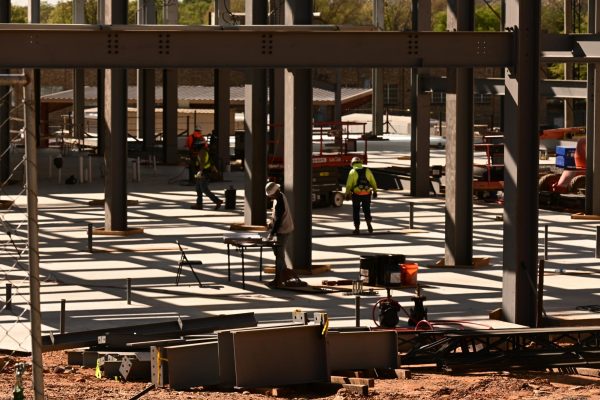
“We have some good, fair allowances built into the job because you’re gonna have some changes. We also have a project contingency built into the job. That is typically about 1% of the cost of construction. There may be a change the owner wants to make, so you have a little bit of cushion built in for stuff like that. If you don’t use it, the school gets it all back. That’s not for us to use if we screwed up, or to fix our overheads. At our weekly OAC meetings, that’s one thing that the school district watches. We have a list of items that hit the contingency that they have to approve,” Rochelle said.
As general contractors, Nabholz and Doyne conducted their own bidding processes among subcontractors for the project’s various parts.
“We’ll create what we call bid packages. Let’s just use HVAC as an example. We’ll call it a mechanical bid package. Before we even put that on the street for mechanical subcontractors to bid on, we’ll start looking through it to see what all is involved in the project. How big of a job is it? Which mechanical subcontractors can even handle something like that?” he said.
Ultimately, NABCO Mechanical & Electrical won the contracts for the project’s mechanical and electrical work, worth a combined total of $12,741,315. Nabholz and NABCO sound similar because they were founded by the same family, but Rochelle emphasized the distinctions between the two companies.
“It was interesting how that one worked out. They were low on bid day for both those bid packages, and NABCO is treated like a regular sub,” he said. “They’re not the same company as Nabholz. Some of their board members are the same. So like, say, for instance, David Nabholz may be on the Nabholz board and the NABCO board. He may have personal investment within NABCO. A lot of people think that they’re the same company; they’re not. Books are completely separate.”
Doyne Construction, owning a 30% stake in the project, introduced Rochelle and the rest of the Nabholz team to subcontractors that might not have been considered otherwise.
“We sat down with Dexter (president and CEO of Doyne Construction). He looks at the bid packages, and he goes, ‘Well, what about this person?’ There were several that we added to the project because of Doyne. They definitely bring a lot to the table on that aspect,” he said.
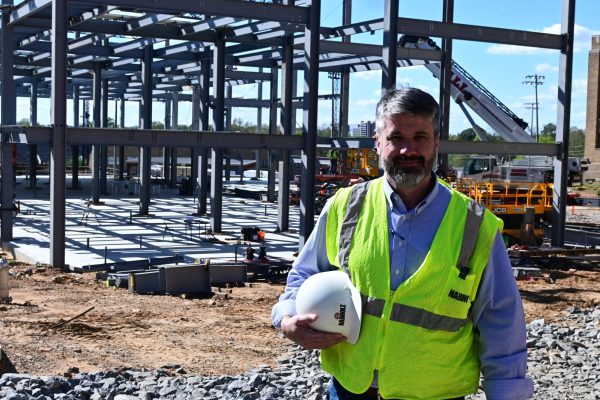
In many ways, the joint venture mirrors the same values of diversity and inclusion that are championed by the school and through its history. Several Black and minority owned companies have been involved in the project with Doyne Construction being chief among them.
“We do have some really good minority subcontractors on this job,” Rochelle said. “One of our main players on this job is CDT Masonry, Kenneth Freeman. He’s just a great person and a great company. We were fortunate enough to get him on this job. You know, he went through the bidding process just like anybody else. He squeaked by being low, just a hair. He’s very competitive on his pricing. I’d love to use them on every job. Unfortunately, I can’t.”
Being a graduate of the Class of 1996, this project carries a personal significance to Rochelle.
“It is very unique to me because it’s my alma mater. It’s just special to be able to come back and work on the high school you graduated from,” he said.
He remembers how those close to him initially led him to the school.
“My friends back around the house were all going to Central High School, so I decided in 10th grade that I wanted to go to Central High School,” Rochelle said. “My sister was a year ahead of me. She did the same thing, and she loved it. She was a lot smarter than I was though. She excelled very well in school.”
He described the process of finding his high school niche as difficult although he eventually found the right fit.
“I wasn’t big into sports. Just didn’t have any size to me, so couldn’t play football. Didn’t know soccer even though a lot of friends played soccer here, but I just kind of fell in love with the drafting program,” Rochelle said.
That love for drafting was what would ultimately point him towards a career in construction. Rochelle was set on studying architecture at the University of Arkansas until his drafting teacher convinced him to check out the construction management program at UA Little Rock. The school, however, took on a greater meaning in the decade after he graduated.
“It means a lot to my family. I basically followed my sister here because she loved it, so I figured I would love it. But my sister passed away when she was 29, and we were really, really close,” Rochelle said. “So this school means a lot to my family, and it meant a lot to my sister. She loved this school. She loved Central High School.”



